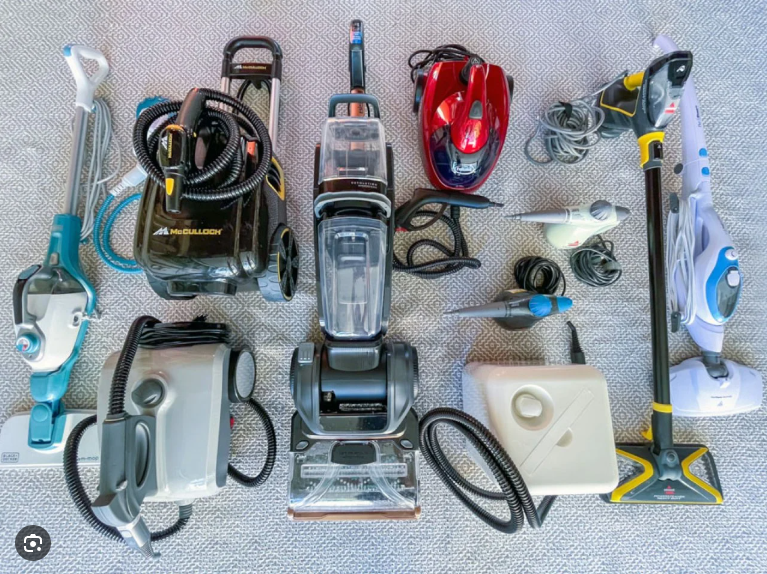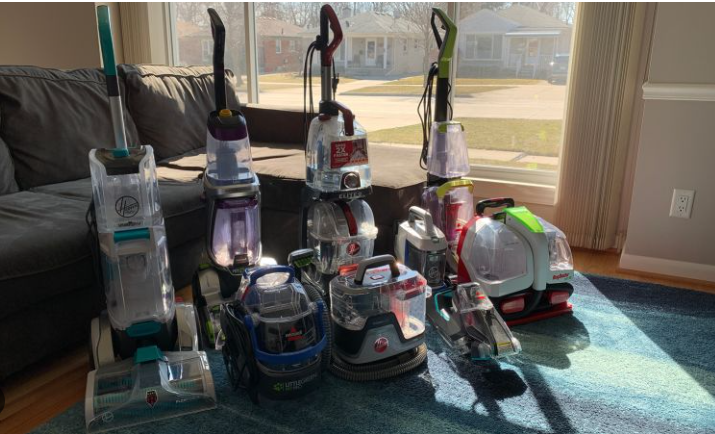In today’s world, where environmental consciousness is at an all-time high, the eco-friendly vacuum cleaner has emerged as a game-changer in household cleaning. As we navigate through 2025, these innovative devices are not just about keeping our homes spotless but also about minimizing our carbon footprint. With rising concerns over climate change and resource depletion, consumers are increasingly seeking out eco-friendly vacuum cleaner options that align with sustainable living practices. This article delves into the latest eco-friendly vacuum cleaner trends, exploring how they integrate advanced technology with green principles to offer efficient, low-impact cleaning solutions.
The shift towards sustainable home appliances has been remarkable, and vacuum cleaners are no exception. Traditional models often rely on high energy consumption and non-recyclable materials, contributing to waste and emissions. However, the new wave of eco-friendly vacuum cleaner trends emphasizes energy efficiency, durable construction, and eco-conscious materials. From cordless designs that reduce battery waste to robotic models that optimize cleaning paths for minimal energy use, these trends are reshaping how we approach vacuum cleaner setup and daily maintenance. If you’re wondering how to use a vacuum cleaner in an environmentally responsible way, starting with the right model is key.
For more detailed advice on selecting the perfect device, check out this comprehensive vacuum cleaner resource that covers everything from basic models to advanced eco variants.
The Rise of Energy-Efficient Designs in Eco-Friendly Vacuum Cleaners
One of the most prominent eco-friendly vacuum cleaner trends in 2025 is the focus on energy efficiency. Modern vacuums are engineered with low-wattage motors that deliver powerful suction without excessive power draw. Typically, these models operate between 400W to 600W, significantly lower than older counterparts that guzzled up to 2000W. This reduction not only lowers electricity bills but also cuts down on greenhouse gas emissions from power plants.
Energy-efficient vacuums often come equipped with smart modes, such as eco settings that adjust power based on the surface being cleaned. For instance, when transitioning from hard floors to carpets during your how to clean with a vacuum cleaner routine, these devices automatically optimize energy use. This trend is driven by consumer demand for appliances that support a lower-carbon lifestyle, with many models certified under global energy standards.
Additionally, the integration of HEPA filters in these designs enhances air quality while promoting sustainability. HEPA filtration captures 99.97% of particles as small as 0.3 microns, reducing the need for frequent deep cleans and extending the appliance’s lifespan. When it comes to vacuum cleaner maintenance, regular filter cleaning is straightforward, ensuring the device remains efficient over time.
Understanding HEPA Filtration and Its Eco Benefits
HEPA filters are a cornerstone of eco-friendly vacuum cleaner technology. Unlike basic filters that require frequent replacement and contribute to landfill waste, washable HEPA filters can be reused indefinitely. This feature aligns perfectly with the trend towards zero-waste cleaning. In 2025, over 70% of new vacuum models incorporate advanced filtration systems, making them ideal for allergy sufferers and eco-conscious households alike.
To maximize the benefits, incorporate vacuum cleaner tips like emptying the dustbin outdoors to prevent indoor air pollution. For those troubleshooting issues, such as reduced suction due to a clogged filter, simple steps like rinsing the HEPA component under water can restore performance without environmental harm.
Sustainable Materials: Building Vacuums for a Greener Future
Sustainability extends beyond energy use to the very materials used in construction. The latest eco-friendly vacuum cleaner trends highlight the use of recycled plastics and biodegradable components. Manufacturers are sourcing post-consumer recycled materials for casings and accessories, reducing the demand for virgin plastics derived from fossil fuels. In fact, some models boast up to 50% recycled content, significantly lowering their production footprint.
Bagless designs are gaining traction as a sustainable alternative to bagged vacuums, which generate ongoing waste from disposable bags. With a bagless eco-friendly vacuum cleaner, you simply empty the canister into a compostable bin or recycling, minimizing landfill contributions. This trend is particularly appealing for urban dwellers with limited space, where a compact, portable vacuum cleaner fits seamlessly into apartment living.
When setting up your new device, consider vacuum cleaner setup tips like positioning it near recycling stations for easy maintenance. For deeper insights into sustainable choices, explore this cleaning guide that emphasizes material selection and long-term durability.
Durability is another key aspect; eco vacuums are built to last 10-15 years with proper care, far outpacing cheaper models that break down quickly and end up in e-waste streams. Brands focusing on modular designs allow for easy part replacements, further extending product life and reducing the need for full replacements.
Bagless vs. Bagged: Which is More Eco-Friendly?
The debate between bagless and bagged vacuums continues, but trends lean towards bagless for their waste reduction. Reusable bags exist, but they often require plastic seals that aren’t fully biodegradable. A bagless model, combined with a sealed system to trap allergens, offers the best of both worlds: efficiency and sustainability. In vacuum cleaner troubleshooting scenarios, bagless units are easier to inspect and clean, preventing overuse of cleaning agents.
For pet owners, bagless designs with anti-tangle brushes handle fur effectively, reducing the frequency of washes and chemical use in vacuum cleaner cleaning routines.

Smart and Robotic Vacuums: Automation Meets Sustainability
Automation is a defining eco-friendly vacuum cleaner trend of 2025, with robotic models leading the charge. These autonomous devices use AI to map cleaning paths, avoiding redundant passes and saving energy. Equipped with sensors, they clean only when needed, often via app scheduling, which optimizes usage and reduces overall power consumption by up to 30% compared to manual operation.
Hybrid robotic vacuums that combine vacuuming and mopping are particularly eco-friendly, as they eliminate the need for separate devices, cutting down on manufacturing impacts. For how to use a vacuum cleaner in a smart home, integration with voice assistants like Alexa allows hands-free control, promoting efficient how to clean with a vacuum cleaner sessions.
However, battery life remains a consideration; look for models with lithium-ion batteries designed for recyclability. Trends show a shift towards solar-charging docks for outdoor units, further enhancing sustainability.
Portable Vacuum Cleaners for On-the-Go Eco Cleaning
Portability is another rising trend, with portable vacuum cleaner options tailored for travel and small spaces. These compact devices use minimal energy and recyclable materials, ideal for quick spot cleans without full appliance startup. In 2025, portable models with USB charging are popular, reducing reliance on wall outlets and promoting off-grid use.
Incorporate vacuum cleaner safety by ensuring these gadgets have auto-shutoff features to prevent overuse. For maintenance, follow vacuum cleaner maintenance guidelines like storing them in protective cases to avoid damage.
Consumer Preferences and Market Growth in Eco Vacuum Trends
The market for eco-friendly vacuum cleaner products is booming, projected to grow at a CAGR of over 5% through 2034. Consumers, especially in urban areas, prioritize models with energy-saving certifications and low-noise operation, aligning with broader sustainability goals. In regions like Europe and North America, regulations mandating eco-labels are accelerating this shift.
Pet hair removal and allergen control are top features, with 40% of buyers seeking multifunctional devices. This demand fuels innovations like self-emptying bases that reduce manual handling and dust exposure.
For the best vacuum cleaner guide, focus on brands emphasizing transparency in material sourcing and energy ratings. Always prioritize durability to avoid frequent purchases, a key tenet of sustainable consumption.

Regional Variations in Eco-Friendly Adoption
While North America leads in smart tech integration, Asia-Pacific sees rapid growth in affordable eco models due to urbanization. In Europe, strict environmental laws drive the use of recyclable components, setting global benchmarks for eco-friendly vacuum cleaner trends.
Vacuum Cleaner Safety and Maintenance for Long-Term Sustainability
Safety is integral to eco trends, with features like automatic cord rewind in corded models preventing trips and reducing wear. For cordless units, overcharge protection safeguards batteries, extending life and minimizing e-waste.
Vacuum cleaner tips for safety include unplugging before vacuum cleaner cleaning and using grounded outlets. In troubleshooting, common issues like overheating can often be resolved by checking vents for blockages, avoiding unnecessary repairs or disposals.
Regular vacuum cleaner maintenance, such as brush roll cleaning, ensures optimal performance and longevity. Use natural cleaners for exteriors to keep chemical use low.
Troubleshooting Common Eco Vacuum Issues
If your device loses suction, inspect for clogs in hoses—a frequent vacuum cleaner troubleshooting fix. For battery models, proper charging prevents degradation, supporting the eco goal of reduced replacements.
Conclusion: Embracing Eco-Friendly Vacuum Cleaner Trends for a Cleaner Planet
As we wrap up, it’s clear that eco-friendly vacuum cleaner trends in 2025 are more than a fad—they’re a necessity for sustainable living. From energy-efficient motors to recycled materials and smart automation, these devices offer powerful cleaning with minimal environmental impact. By choosing the right eco-friendly vacuum cleaner, you’re not only enhancing your home’s cleanliness but also contributing to a greener future.
Whether you’re learning how to use a vacuum cleaner for the first time or upgrading your setup, prioritize models that embody these trends. For expert maintenance tips, this resource is invaluable. Let’s commit to eco-conscious choices in our daily routines, starting with the humble vacuum cleaner. Together, we can clean smarter and live greener.
(Word count: approximately 2050)